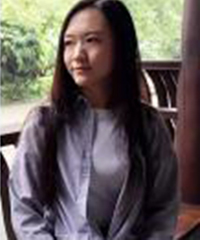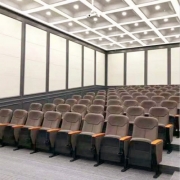SAT阅读材料练习:urban design
Urban design
Urban design concerns the arrangement, appearance and functionality of towns and cities, and in particular the shaping and uses of urban public space. It has traditionally been regarded as a disciplinary subset of urban planning, landscape architecture, or architecture and in more recent times has been linked to emergent disciplines such as landscape urbanism. However, with its increasing prominence in the activities of these disciplines, it is better conceptualised as a design practice that operates at the intersection of all three, and requires a good understanding of a range of others besides, such as real estate development, urban economics, political economy and social theory.
Urban design theory deals primarily with the design and management of public space (i.e. the 'public environment', 'public realm' or 'public domain'), and the way public places are experienced and used. Public space includes the totality of spaces used freely on a day-to-day basis by the general public, such as streets, plazas, parks and public infrastructure. Some aspects of privately owned spaces, such as building facades or domestic gardens, also contribute to public space and are therefore also considered by Urban design theory. Important writers on, and advocates for, urban design theory include Christopher Alexander, Michael E. Arth, Edmund Bacon, Ian Bentley,[1]Peter Calthorpe, Alex Krieger, Gordon Cullen, Andres Duany, Jane Jacobs, Jan Gehl, Kevin Lynch, Roger Montgomery, Aldo Rossi, Colin Rowe, Robert Venturi, William H. Whyte, Bill Hillier, and Elizabeth Plater-Zyberk.
While the two fields are closely related, 'urban design' differs from 'urban planning' in its focus on physical improvement of the public environment, whereas the latter tends, in practice, to focus on the management of private development through established planning methods and programs, and other statutory development controls.
Public spaces are frequently subject to overlapping management responsibilities of multiple public agencies or authorities and the interests of nearby property owners, as well as the requirements of multiple and sometimes competing users. The design, construction and management of public spaces therefore typically demands consultation and negotiation across a variety of spheres. Urban designers rarely have the degree of artistic liberty or control sometimes offered in design professions such as architecture. It also typically requires interdisciplinary input with balanced representation of multiple fields including engineering, ecology, local history, and transport planning.
The scale and degree of detail considered varies depending on context and needs. It ranges from the layout of entire cities, as with l'Enfant's plan for Washington DC, Griffin and Mahony's plan for Canberra and Doxiadis' plan for Islamabad (although such opportunities are obviously rare), through 'managing the sense of a region' as described by Kevin Lynch, to the design of street furniture.
Urban design may encompass the preparation of design guidelines and regulatory frameworks, or even legislation to control development, advertising, etc. and in this sense overlaps with urban planning. It may encompass the design of particular spaces and structures and in this sense overlaps with architecture, landscape architecture, highway engineering and industrial design. It may also deal with ‘place management’ to guide and assist the use and maintenance of urban areas and public spaces.
Much urban design work is undertaken by urban planners, landscape architects and architects but there are professionals who identify themselves specifically as urban designers. Many architecture, landscape and planning programs incorporate urban design theory and design subjects into their curricula and there are an increasing number of university programs offering degrees in urban design, usually at post-graduate level.

更多培训课程,学习资讯,课程优惠等学校信息,请进入 哈尔滨派特森英语培训学校 网站详细了解,免费咨询电话:400-998-6158

















